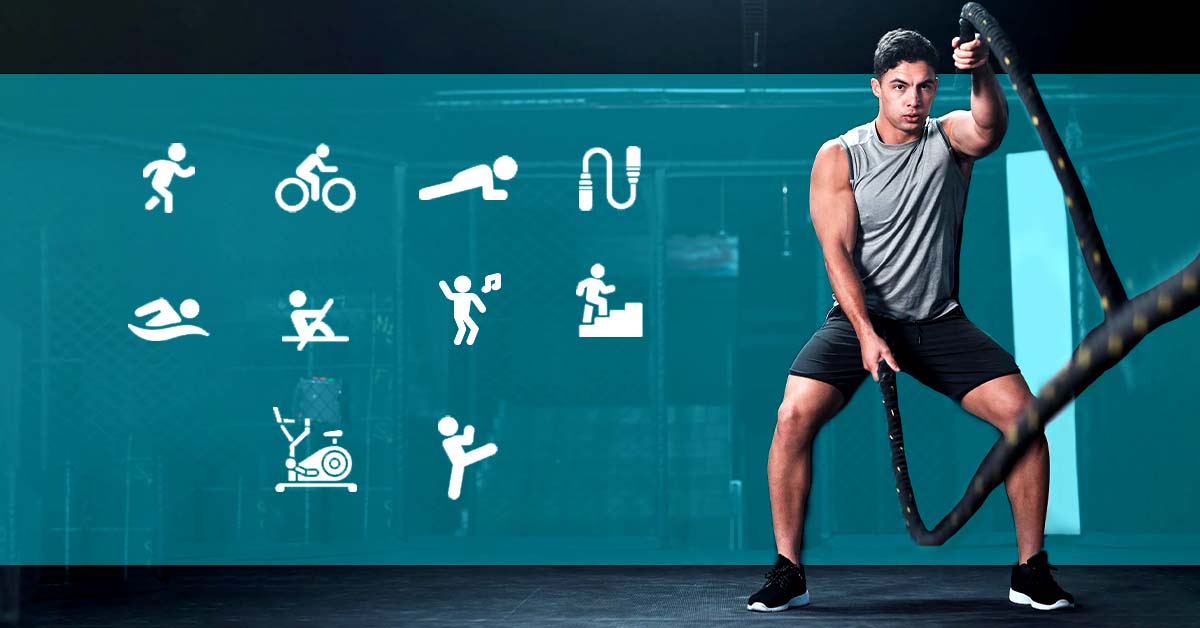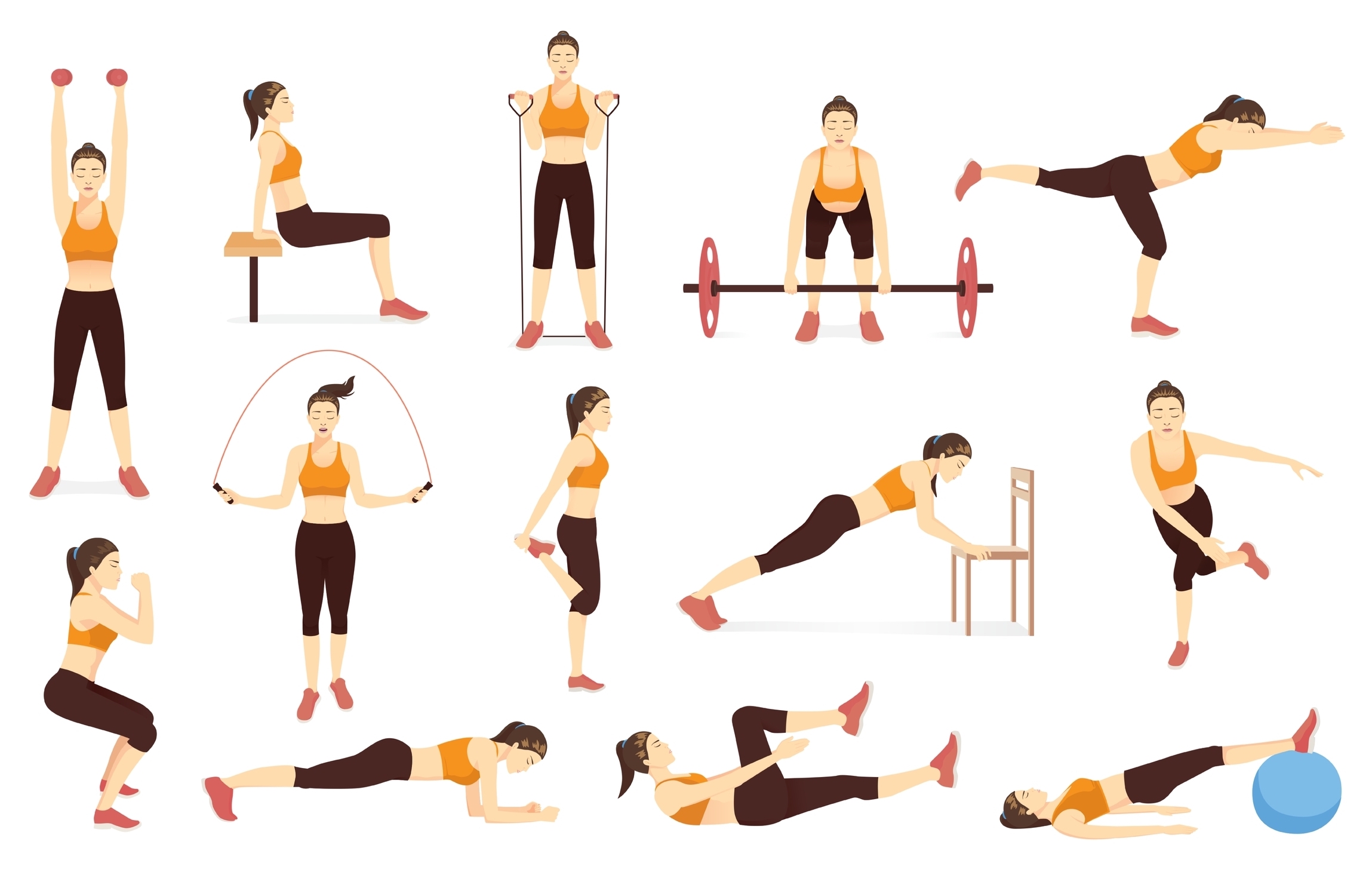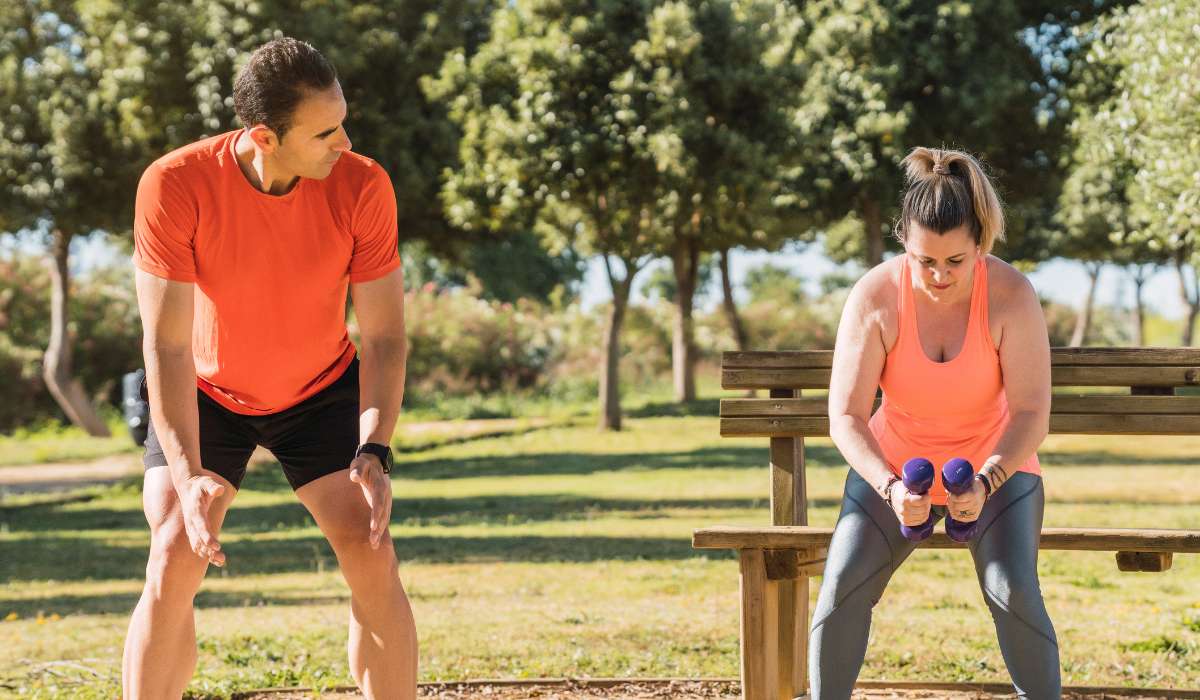Guide to Cardio Exercises offer numerous benefits for both weight loss and overall health. For weight loss, cardio exercises help burn calories, boost metabolism, and promote fat loss. Additionally, cardio exercises improve cardiovascular health, strengthen the heart muscle, lower blood pressure, and reduce the risk of chronic diseases like heart disease and diabetes. These exercises also enhance lung function, increase endurance, improve mood, and reduce stress levels. Engaging in cardio exercises regularly can lead to improved fitness levels and contribute to a healthier lifestyle.
Benefits of Cardio Exercises for Weight Loss

Cardio exercises have numerous benefits for weight loss. They burn calories, boost metabolism, and promote fat loss. These exercises also improve cardiovascular health, lower blood pressure, and reduce the risk of chronic diseases like heart disease and diabetes. Additionally, cardio exercises increase endurance, improve mood, and reduce stress levels. Engaging in cardio exercises regularly can lead to improved fitness levels and contribute to a healthier lifestyle.
Benefits of Cardio Exercises for Overall Health
Cardio exercises have numerous benefits for overall health. They improve lung function, strengthen the heart, and increase blood flow. These exercises also help regulate blood sugar levels, improve cholesterol levels, and enhance immune function. Regular cardio exercise reduces the risk of chronic diseases such as obesity, heart disease, and stroke. It can also improve mental health by reducing symptoms of depression and anxiety. Engaging in cardio exercises regularly is important for maintaining overall health and well-being.
Types of Cardio Exercises

Types of Cardio Exercises include High-Intensity Interval Training (HIIT) and Steady-State Cardio Exercises. HIIT involves short bursts of intense exercise followed by brief rest periods, while steady-state cardio involves maintaining a steady pace for a longer duration. Running is a popular cardio exercise that improves cardiovascular fitness and burns calories. Beginners should start with a combination of walking and running, gradually increasing their running time. Advanced techniques such as interval training and hill sprints can further enhance fat-burning. Cycling is another effective cardio exercise that can be done outdoors or indoors using stationary bikes. Jump rope workouts provide a compact and effective form of cardio exercise, burning calories and improving coordination. Creating an effective cardio workout plan involves incorporating a variety of exercises and gradually increasing intensity.
High-Intensity Interval Training (HIIT) Overview
High-Intensity Interval Training (HIIT) is a popular cardio exercise that involves short bursts of intense exercise followed by brief rest periods. It is known for its effectiveness in burning calories and improving cardiovascular fitness. HIIT workouts can be done using various exercises such as running, cycling, or bodyweight movements. This type of cardio exercise is time-efficient and can be modified to suit different fitness levels. It is important to warm up properly before engaging in HIIT to prevent injuries and gradually increase the intensity and duration of the workouts for maximum benefits.
Steady-State Cardio Exercises Explained
Steady-State Cardio Exercises, also known as traditional cardio, involve maintaining a steady and moderate level of intensity throughout the workout. Examples include jogging, swimming, or using an elliptical machine. These exercises are great for building endurance and improving cardiovascular health. To perform steady-state cardio, simply choose an activity and maintain a consistent pace for an extended period of time, typically anywhere from 30 minutes to an hour. Remember to listen to your body, start at a comfortable intensity, and gradually increase the duration and intensity of your workouts for maximum benefits.
Running for Cardio

Running for Cardio: Tips for Beginners
- Start with a warm-up to prep your body for the run.
- Begin with a comfortable pace and gradually increase it.
- Focus on proper form, with a relaxed upper body and a slight lean forward.
- Incorporate intervals of walking and running if needed.
- Invest in proper running shoes to prevent injuries.
- Stay consistent with your workouts to build endurance and improve performance.
Running for Cardio: Tips for Beginners
:max_bytes(150000):strip_icc()/SHAPE-7-cardio-workout-charts12-2000-563763607b3946d0940b4e1d1daba350.jpg)
To get started with running for cardio, warm up your body, gradually increase your pace, focus on proper form, consider intervals of walking and running, invest in proper running shoes, and stay consistent with your workouts to build endurance and improve performance.
Advanced Running Techniques for Burning Fat
To maximize fat burning while running, incorporate advanced techniques such as sprint intervals, hill sprints, and fartlek training. Sprint intervals involve alternating between periods of maximum effort sprinting and active recovery, while hill sprints challenge your muscles and boost calorie burn. Fartlek training, on the other hand, involves mixing up your pace throughout the run, incorporating periods of fast running followed by slower recovery periods. These techniques can help increase your metabolism, improve cardiovascular fitness, and burn more fat during and after your runs.
Cycling for Cardio
Cycling for cardio is a great way to burn fat and improve cardiovascular fitness. To get the most out of your cycling workouts, try combining steady-state rides with interval training. Steady-state rides involve maintaining a moderate intensity level for an extended period, while interval training incorporates bursts of high intensity followed by periods of recovery. Both methods can help increase calorie burn and improve endurance. Whether you prefer outdoor cycling or indoor cycling on a stationary bike, cycling for cardio can be a fun and effective way to reach your fitness goals.
Cycling for Cardio: Benefits and Techniques
Cycling for cardio is a popular exercise that offers numerous benefits. It increases heart rate and improves cardiovascular health, making it an effective way to burn fat. Cycling also helps build leg muscles and improves overall strength and endurance. The low impact nature of cycling makes it a great option for people of all fitness levels. When cycling for cardio, it’s important to maintain proper form and adjust the intensity level based on your fitness goals. Whether you choose to cycle indoors or outdoors, incorporating cycling into your cardio routine can yield great results.
Indoor vs. Outdoor Cycling for Cardio

When it comes to cycling for cardio, there are two main options: indoor cycling and outdoor cycling. Indoor cycling provides a controlled environment and allows for precise tracking of metrics such as speed and resistance. Outdoor cycling, on the other hand, offers the benefits of fresh air, varied terrain, and the enjoyment of nature. Both options provide an effective cardio workout, so it ultimately comes down to personal preference. Whether you choose to cycle indoors or outdoors, incorporating cycling into your cardio routine will help you achieve your fitness goals.
Jump Rope Workouts
Jump rope workouts are a fantastic way to get your heart rate up and burn calories. To make the most of your jump rope cardio session, try different techniques like single jumps, double unders, and crisscrosses. Incorporate interval training by alternating between high-intensity bursts and recovery periods. To maximize fat loss, aim for at least 20 minutes of continuous jumping. Remember to start slowly if you’re a beginner and gradually increase the intensity and duration of your workouts. Enjoy the benefits of this simple yet effective cardio exercise.
Jump Rope Techniques for Effective Cardio
To make your jump rope cardio session effective, try different techniques like single jumps, double unders, and crisscrosses. Incorporate interval training by alternating between high-intensity bursts and recovery periods. Aim for at least 20 minutes of continuous jumping to maximize fat loss. Start slowly if you’re a beginner and gradually increase the intensity and duration of your workouts. Enjoy the benefits of this simple yet effective cardio exercise.
Benefits of Jump Rope Workouts for Fat Loss
Jump rope workouts are highly effective for fat loss due to their ability to burn calories and increase cardiovascular endurance. The high-intensity nature of jump rope exercises engages multiple muscle groups, leading to improved muscle tone and increased metabolism. Additionally, jump rope workouts can be customized to suit individual fitness levels, making them accessible to beginners and advanced exercisers alike. By incorporating jump rope exercises into your fitness routine, you can enjoy the benefits of an efficient and effective cardio workout that helps you shed excess fat and improve overall fitness levels.
Conclusion of Guide to Cardio Exercises
Creating an effective cardio workout plan is crucial for achieving your fitness goals. Start by determining your current fitness level and setting realistic goals. Incorporate a variety of cardio exercises, such as running, cycling, and jump rope workouts, to keep your routine interesting and challenging. Gradually increase the intensity and duration of your workouts to continue challenging your body. Don’t forget to listen to your body and rest when needed. Remember, consistency is key when it comes to cardio exercises, so make sure to stick to your plan and enjoy the journey to a healthier and fitter you.
Creating an Effective Cardio Workout Plan
:max_bytes(150000):strip_icc()/SHAPE-7-cardio-workout-charts-2000-723796d9ed6747f78070a510e1ab04ed.jpg)
To create an effective cardio workout plan, it’s important to consider your current fitness level and set realistic goals. Incorporate a variety of cardio exercises like running, cycling, and jump rope workouts to keep your routine interesting. Gradually increase intensity and duration to challenge your body. Listen to your body and rest when needed. Consistency is key, so stick to your plan and enjoy the journey to a healthier you.
Frequently Asked Questions
- How often should I do cardio exercises for weight loss?
To maximize weight loss, aim for at least 150 minutes of moderate-intensity cardio exercises per week. - Can I do both HIIT and steady-state cardio?
Yes, incorporating both HIIT and steady-state cardio can provide effective results by challenging your body in different ways. - How do I start running for cardio if I’m a beginner?
Start with a combination of walking and jogging, gradually increasing the time spent jogging until you can run continuously. - What are some advanced running techniques for burning fat?
Incorporate interval training, hill sprints, and tempo runs to increase intensity and calories burned during your runs. - Is indoor or outdoor cycling better for cardio?
Both indoor and outdoor cycling offer benefits. Indoor cycling provides more controlled conditions, while outdoor cycling adds variety and can be more enjoyable. - How can I make jump rope workouts more effective?
Vary your jump rope technique with single-leg jumps, double unders, or criss-crosses to challenge different muscle groups. - Are jump rope workouts effective for fat loss?
Yes, jump rope workouts are highly effective for fat loss as they are a high-intensity cardio exercise that burns calories quickly.
Remember to consult a healthcare professional before starting any new exercise routine, especially if you have any underlying health conditions.
For More Health blogs visit Aerns

